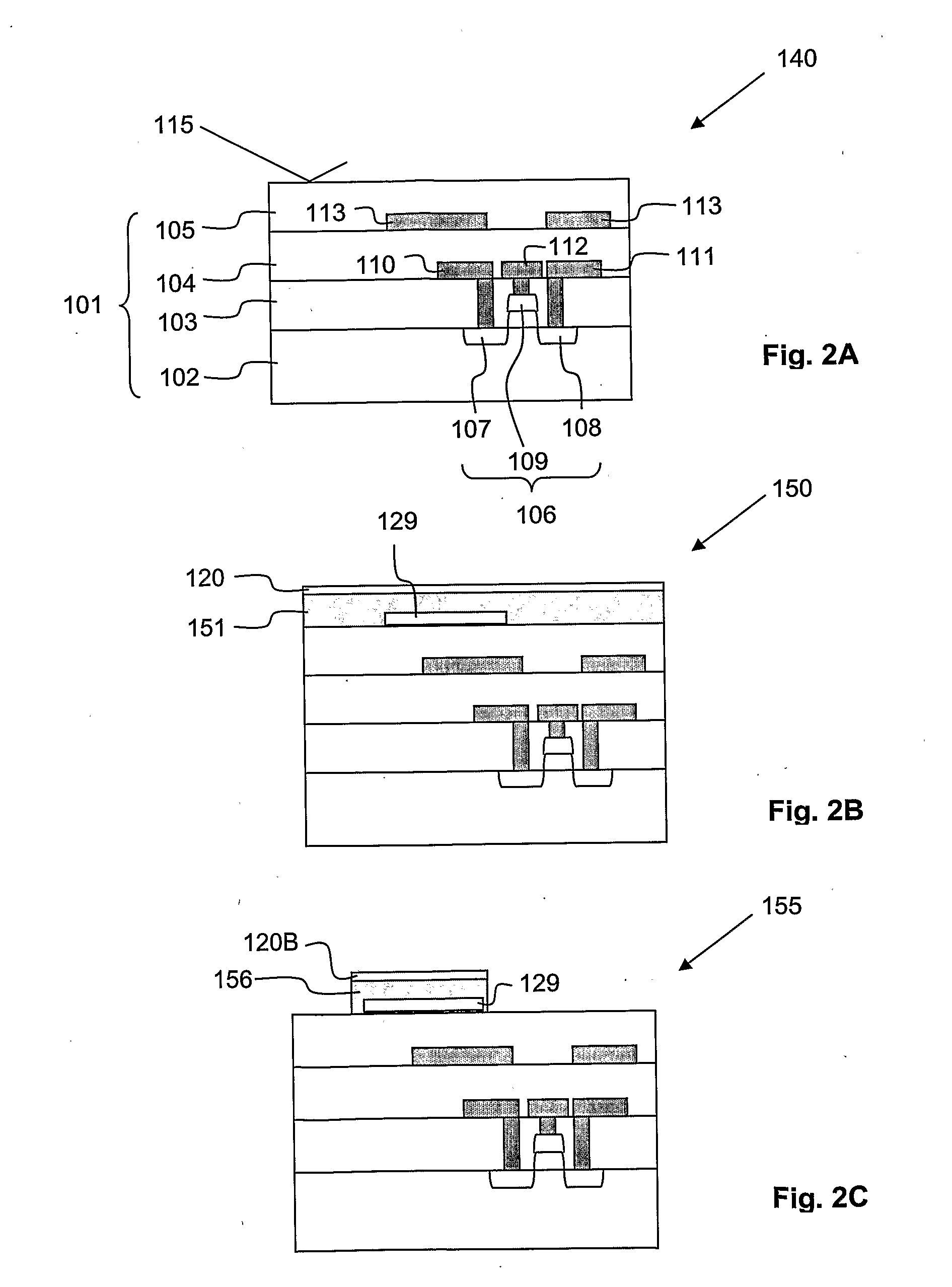Biosensor
a biosensor and electrode technology, applied in the field of biosensors, can solve the problems of constant changes in the electrical interaction between the cell and the electrode assembly, the difficulty of achieving good sample-electrode interaction, and the motility and structural plasticity of such cells, so as to reduce the resistance between the patch clamp electrode and the reference electrode, and improve the likelihood of contact
- Summary
- Abstract
- Description
- Claims
- Application Information
AI Technical Summary
Benefits of technology
Problems solved by technology
Method used
Image
Examples
second embodiment
[0063]Cross-sections through the biosensor 100 according to the present invention during different production steps are now shown in FIG. 2A to FIG. 2J. Features already described with respect to FIG. 1 will not be described again here. Nevertheless, same reference signs refer to identical components.
[0064]The production of the biosensor 100 is described starting at a first intermediate product. 140 shown in FIG. 2A fabricated with generally known CMOS technology such as implant, film deposition, photolithography, dry etch and CMP. This first intermediate product 140 comprises the substrate 101 with buried FET 106, buried source and drain track conductors 110, 111, buried gate lead 112, and buried screening electrode 113. As already mentioned above, the substrate 101 is bordered above the FET 106 with the substrate surface 115. This first intermediate product 140 is produced using generally known production processes, a description thereof is omitted here.
[0065]On the substrate surf...
first embodiment
[0073]For completion of the biosensor 100 (compare FIG. 2J), the ninth intermediate product 185 is wet etched such that the remaining vertically thick organic layer 156 is removed. Therefore, the channel 121 is completed, i.e. the first and second openings 122, 123 are interconnected. During this wet etch process, the patch clamp electrode 129 is not affected. Then, the bio-compatible chamber walls 127 are formed on appropriate portions of the fourth electrically insulating layer 126 from bio-compatible material by generally known formation processes. According to the present invention, polydimethylsiloxane (PDMS) is used as bio-compatible material for the bio-compatible chamber walls 127. Finally, the exposed parts of the second etch mask layer 124 which are not covered by the fourth electrically insulating layer 126 are covered with the binding layer 125. Please note that for covering the exposed parts of the second etch mask layer 124 with the binding layer 125, a selective depos...
PUM
| Property | Measurement | Unit |
|---|---|---|
| diameter | aaaaa | aaaaa |
| dielectric constant | aaaaa | aaaaa |
| electrically insulating | aaaaa | aaaaa |
Abstract
Description
Claims
Application Information
 Login to View More
Login to View More - R&D
- Intellectual Property
- Life Sciences
- Materials
- Tech Scout
- Unparalleled Data Quality
- Higher Quality Content
- 60% Fewer Hallucinations
Browse by: Latest US Patents, China's latest patents, Technical Efficacy Thesaurus, Application Domain, Technology Topic, Popular Technical Reports.
© 2025 PatSnap. All rights reserved.Legal|Privacy policy|Modern Slavery Act Transparency Statement|Sitemap|About US| Contact US: help@patsnap.com



